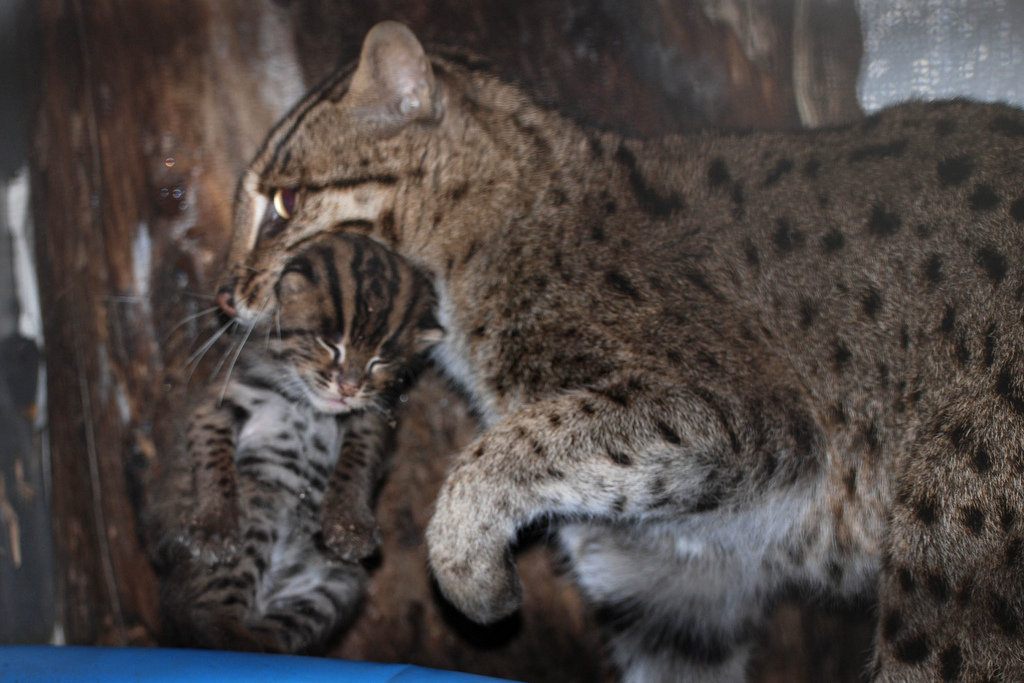Birth of Endangered Kittens Gives Hope to Rare Species


The Smithsonian National Zoo is celebrating the birth of two endangered fishing cats, marking the first time the endangered species has been successfully bred there, the zoo said.
The two kittens were born on May 18 to 7-year-old mother Electra. Zookeepers expect the kittens to become valuable breeders in the future because their genes are not well-represented in the captive population of fishing cats.
Fishing cats are vanishing from riverbanks in their native India and Southeast Asia due to water pollution, poaching and increased shrimp farming throughout their habitat. Wild populations have been cut in half over the past 18 years, prompting the International Union for Conservation of Nature to change the species' status from vulnerable to endangered in 2008.
Keepers are monitoring the mother and kittens through a closed-circuit camera, allowing the family time to bond. The endangered kittens will not make their public debut until later this summer. [Fishing cat kitten images.]
"It's very rewarding that our efforts have paid off," said zoo director Dennis Kelly in a statement. "The future of their wild cousins hangs in the balance, so it's imperative that we do all we can to ensure their survival."
Before the kittens' father, Lek, arrived at the zoo in 2011, officials planned to pair Electra with another male. The match looked good to scientists, who weigh genetic makeup, social needs, temperament and overall health before deciding upon a pairing. But Electra and the other male just weren't interested in each other.
When keepers introduced Lek and Electra, though, the cats soon began showing affection, grooming and nuzzling each other.
Get the world’s most fascinating discoveries delivered straight to your inbox.
The zoo's three adult fishing cats are taking part in a study looking at the many factors that control whether or not breeding succeeds, and how to best select breeding partners.
National Zoo veterinarians will perform a complete physical exam on the fishing cat kittens and administer their first set of vaccines in the next few weeks. Keepers said the kittens become more independent every day.
"Electra will let the kittens explore only so far before she brings them back under her close watch," said animal keeper Courtney Janney. "Her maternal instincts kicked in right away, and she's proving to be a very adept and confident mother."
Fishing cats feed on fish, frogs and aquatic birds, and they have a unique way of capturing their meals. By tapping their paws on the surface of the water, they trick prey into thinking the water ripples come from an insect. When the prey is close enough, the cat will either dive into the water after it or scoop it out using its partially webbed paw.
Follow OurAmazingPlanet for the latest in Earth science and exploration news on Twitter @OAPlanet. We're also on Facebook and Google+.



